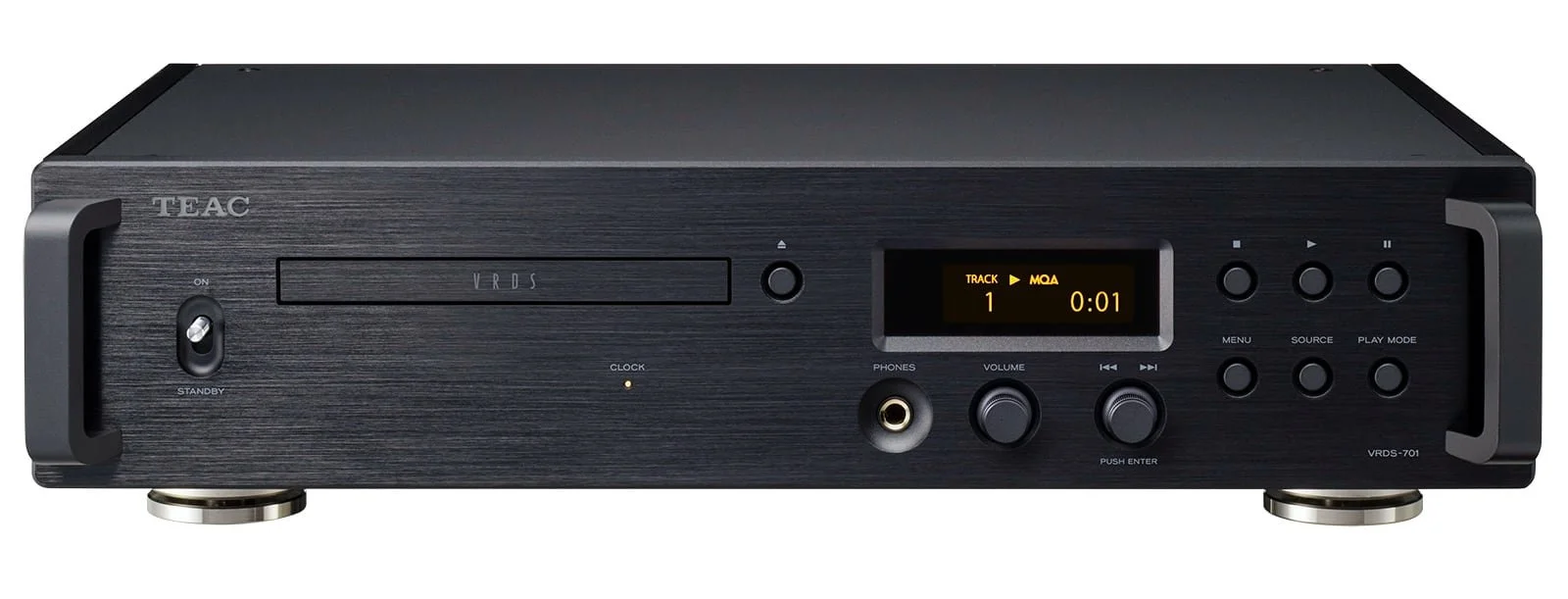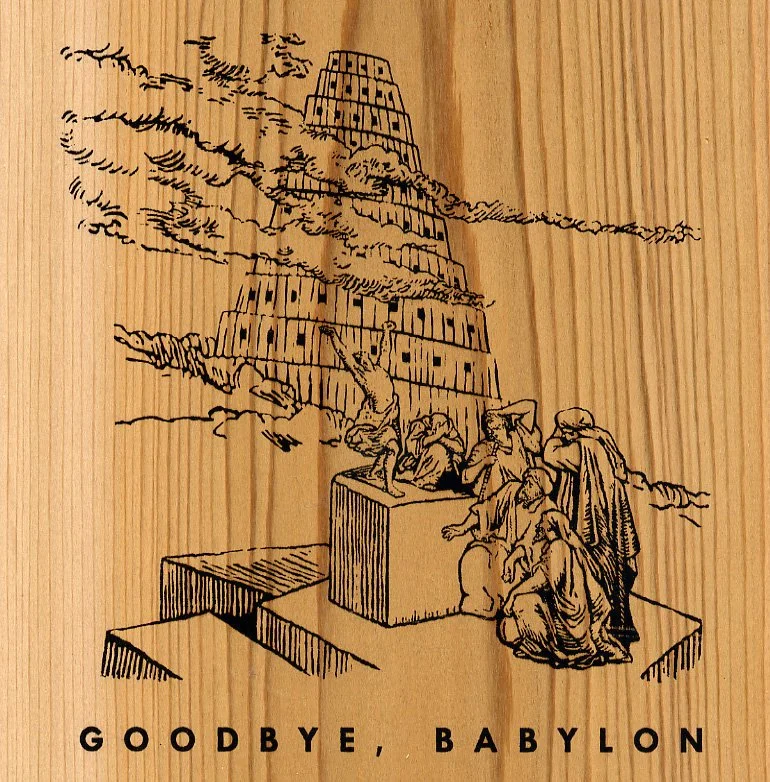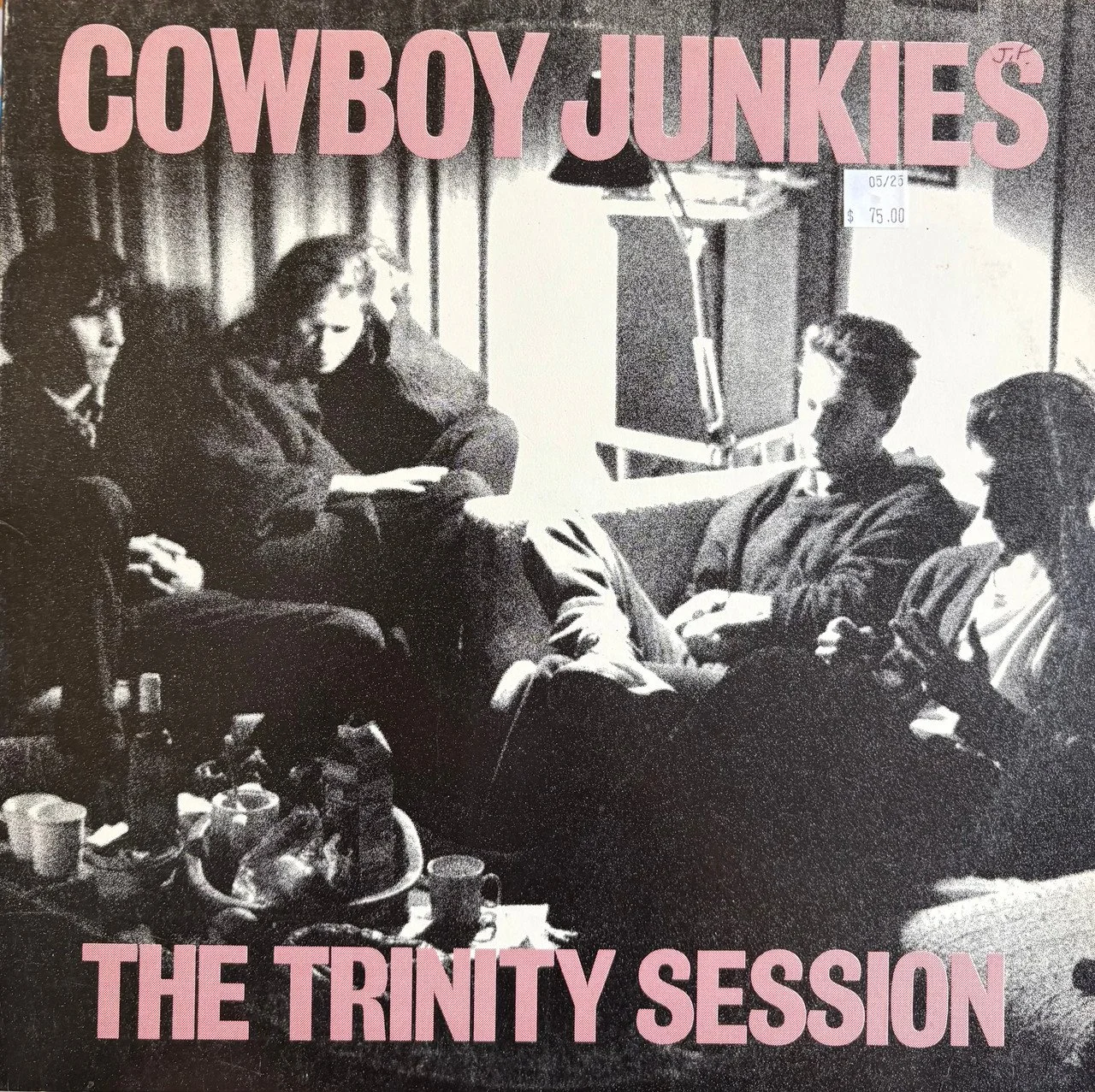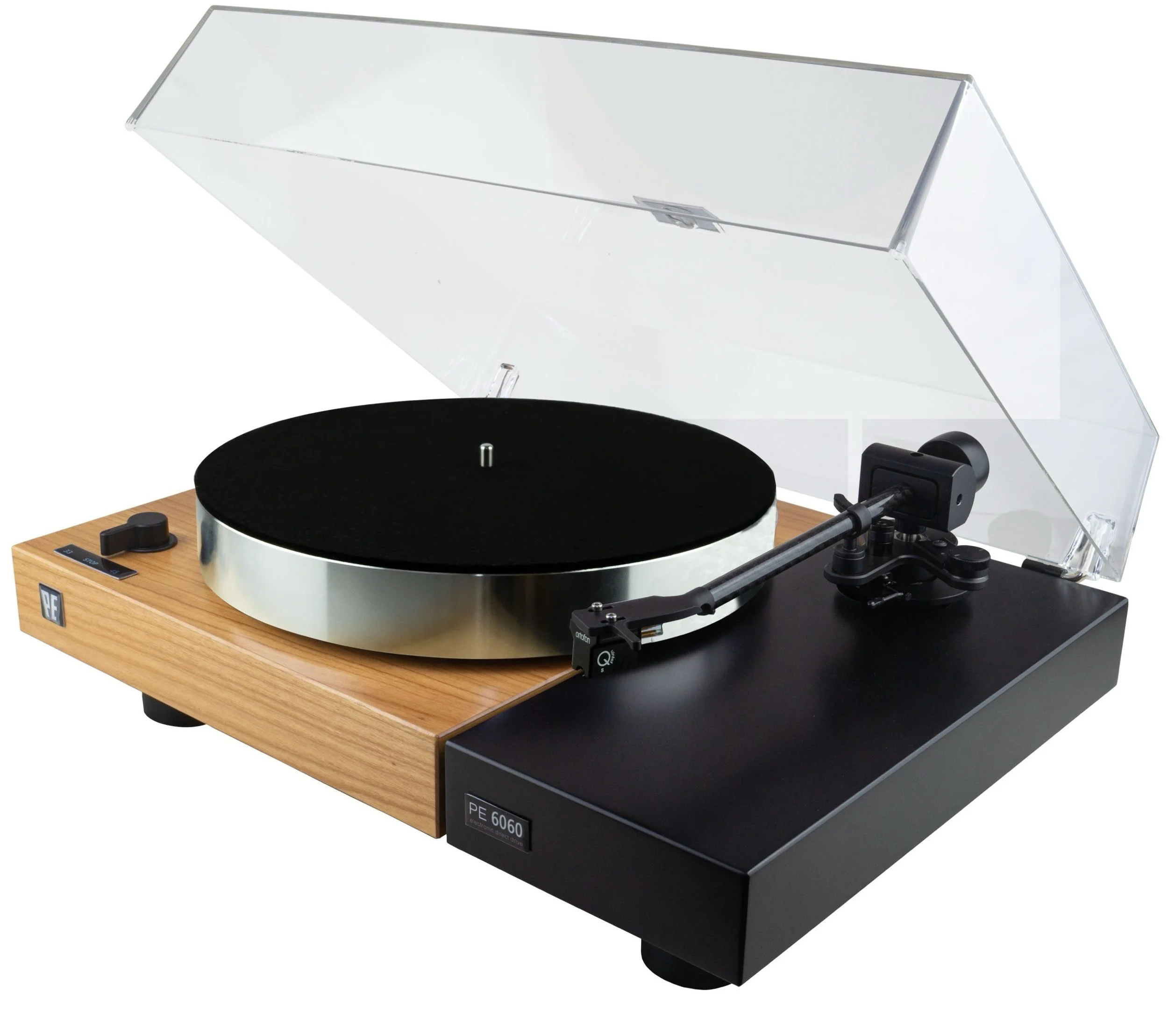TEAC VRDS-701 CD Player
I grew up on CDs. As a kid in the ‘90s, I was certainly aware of vinyl records and their mystique, but music meant CDs to me. I loved building a collection and flipping through the tiny booklets with liner notes in minuscule font. As my musical horizons expanded, I made countless mixes, copied library albums and burned live concert recordings from The Internet Archive to disc, so CD-Rs became as big a part of my collection as commercial releases.
In college, I finally took the plunge into analog and became enamoured with the deeper history, the careful playback ritual and of course the sound of vinyl records. Over the years, my listening became mostly split between streaming and vinyl. I never turned my back on CDs and still have a collection and a player in my system. “If it ain’t broke, don’t fix it” became my approach to CD playback, and before I knew it my Yamaha DVD-S1700 universal player became vintage. Just my cue to explore the landscape of CD players in 2025. Today, the market is humming, with fresh players and transports that run the gamut from extremely affordable to ultra luxe.
The TEAC name has always been floating around in my audiophile consciousness, but most of that notoriety came from being the parent company of ESOTERIC. The company's history goes much deeper than ESOTERIC. Originally established in the 1950s as Tokyo Electro-Acoustic Company, TEAC Corporation has been a leader in multiple forms of physical media recording and playback ever since, including reel-to-reel tape, compact disc, and even manufacturing floppy disc drives. Also under the corporate umbrella is TASCAM, renowned for studio equipment.
In the last few years, TEAC has updated their audiophile-oriented product offerings to include three full lines: Reference 300, Reference 500 and Reference 700. When I reached out to the TEAC PR team about reviewing “a CD player,” I was pleasantly surprised to be offered the VRDS-701 (USD 3999) from the top 700 line for review. I was fascinated to learn how TEAC could apply their deep experience to a reference-level HiFi component at a more approachable price point than the ESOTERIC brand.
Features & Specifications
The VRDS-701 is outfitted like a CD-focused digital hub, ready for numerous system configurations. With multiple digital inputs, digital outputs, fixed or variable analog outputs and a headphone amp, this unit can serve as a proper digital preamplifier.
The namesake feature is TEAC’s new Vibration-Free Rigid Disc-Clamping System which was designed to eliminate vibration of the spinning CD and nearby mechanicals.
The DAC section eschews popular off-the-shelf chips for a custom DSD-capable, FPGA-based circuit. The VRDS-701 only plays “Red Book” CDs but all PCM signals are converted to 1-bit or multibit according to user settings. It can accept DSD and MQA encoded signals via the USB input.
TEAC has also taken care to implement a fully analog variable gain amp volume attenuator which is balanced to minimize discrepancies between left and right channel attenuation.
The VRDS-701 is $700 more expensive than its transport-only sibling, the aptly named VRDS-701T. Considering hardware alone, it’s a reasonable upcharge for a custom DAC, analog volume control and dedicated headphone amplifier.
Complete specifications of the VRDS-701 according to TEAC are here.
Design & Build
The VRDS-701 is a CD player that is built like an amplifier—and I don’t mean a Class D amplifier. From the machined aluminum casework and ribbed heatsink-like side panels to the pro-inspired rack handles, it's a serious unit. Around this price point, CD players can start to look a bit ornamental, but the VRDS-701 looks all business. The quality of materials and level of finishing easily separate the VRDS from a rough and ready pro-audio product, but it doesn’t shout.
Physically interacting with the player is lovely, particularly the robust machined standby switch. The speed of the disc tray is quite deliberate, but perfectly smooth and quiet.
The included remote is a hefty piece of plastic and aluminum with an array of identical buttons, requiring a glance to select the right function each time it’s picked up. Just about every feature of the player is accessible from the remote, which is neat.
Review System
Sources: Yamaha DVD-S1700, Wiim Mini, Bluesound NODE (review forthcoming)
Amplification: PS Audio Stellar Strata Mk2, Parasound HCA-750A
DAC: Ferrum Audio ERCO
Headphones: Sendy Audio Peacock, Sennheiser x Massdrop HD6XX
Loudspeakers: Audio Physic Step
Analog & Speaker Cables: Audio Art Classic
With two streamers, a disc player, and multiple headphone amps and DACs already in-house, including the recently reviewed PS Audio Stellar Strata Mk2, I had several system configurations to play with. While I tried multiple comparison exercises, I spent most of my time with the TEAC playing CDs and sending the analog signal to the PS Audio Stellar Strata Mk2.
Listening
One appeal of CDs as a medium is their suitability for storage and playback of archival recordings and large discographies. As the resident Deadhead at Audiophilia, that includes numerous non-commercial live recordings, mostly sourced from Archive.org. I still have CD-Rs of Grateful Dead shows I burned in the mid-2000s when soundboard recordings were still available for download from the Archive. I’ve had mixed results with some brands of CD-R, and as they age. Unlike vinyl records, where listenability declines somewhat linearly with condition, CDs either play properly or they don’t. I dove deep into my collection with the VRDS-701 and didn’t hear a single skip or blip when playing through stacks of 20-year-old CD-Rs. I don’t read or hear much about CD-Rs as a medium in the audiophile scene. For audiophiles with a cache of CD-Rs - I know you’re out there - the VRDS-701 can read just about anything.
An all time favorite in my Grateful Dead collection is Dick’s Picks Volume 4 (Grateful Dead Records, 1996), a 3-disc release compiled from legendary shows at the Fillmore East in New York City in February, 1970. The Fillmore East was a favourite venue of the band, and their recording engineer (and famed LSD chemist) Owsley “Bear” Stanley went to extreme lengths to accurately record the band there. To prepare for the show, Bear and his team played white noise over the house sound system and measured it throughout the venue, using this data to install effective acoustic treatments throughout the space. The result of this forward-thinking effort is a crackling recording.
The 29-minute extended jam, “Dark Star,” one of the most legendary the Grateful Dead performed, is a concise masterclass in what makes the Dead the Dead. Listening to this recording has always been immersive, but it requires some effort to deconvolute everything that is happening. From the mesmeric crowd involvement, the cryptic lyrics, the complex improvisations involving the entire band, even percussionist Bill Kreutzmann’s insistent but essential scratching on the guira, it’s an experience. With the VRDS-701, I was not just analyzing the recording more closely. I was not just feeling the music with all context melting away. It was all of the above. More of everything was presented - wider, deeper and readily available for absorption. So much more than I realized was contained in the bits on my disc, revealing a complete document all at once - the music, the space and the recording.
Leaning into the historical aspect of CDs, I pulled out my cherished box set Goodbye, Babylon, a 6-disc box set of early gospel recordings (Dust-to-Digital, 2003). These recordings were captured between 1902 and 1960, an enormous range in technological terms. A surprising theme emerged with the VRDS-701: consistency. I do not mean the sameness that often comes with streaming, rather consistency in the performance of the CD player. I could rely on the TEAC to give me most of what was on every single track without throwing any recording under the bus. Not once was I forced to stay in analytical mode. The musicality was right there, even when it was clear that a recording was rescued from a rough original source. I came to trust the TEAC’s insight into the recording. And this trust makes it a true reference in addition to a vehicle for musical beauty.
Returning to a more familiar reference recording, I love the Cowboy Junkies’ The Trinity Sessions (RCA, 1988) for its music and as a testament to possibilities of 16-bit / 44.1 kHz recordings. This album was famously recorded in a Toronto church with a single mic live to a PCM processor in 16-bit / 44.1 kHz, an extremely simple signal chain. The Trinity Sessions sound great on any system, so of course it was sublime on the TEAC. The difference with the VRDS-701 was scale and space. Walls fell away more convincingly, putting me in the church instead of showing me the church through a window.
Using the DAC of the VRDS-701, I played around by comparing streams to CDs of the same album. This can be an apples-to-oranges situation when the provenance of the stream is unknown, but it reinforced for me that the convenience of streaming sacrifices some musical authority. With the VRDS-701, there was less distance physically (as in over the internet) and musically between the performance and me.
I spent several weeks using the single-ended analog outputs of the VRDS-701 in variable mode, driving my Parasound HCA-750A power amplifier. If I did not need analog inputs for a turntable, this could easily be a viable long-term system configuration. Just another way TEAC is looking out for the CD enthusiast with the VRDS-701. A compact streamer and a power amplifier on either end of the VRDS-701, plus speakers, would make an elegant all-digital system.
In this configuration, I was leaning on the headphone amplifier in the VRDS-701 as well. With the easy-to-drive 50 ohm, 103 dB/mW Sendy Peacock planar magnetic headphones, the built-in amp gave me plenty of power, dynamics and soundstage for serious listening. The amp had enough power for the Sennheiser HD6XX but wasn’t the ideal match for these 300-ohm cans. Audiophiles thinking about a $4000 CD player may well have a dedicated headphone amplifier, but those who do not may consider the built-in head amp a legitimate value-add. Or it could be an excuse to try a first nice set of cans!
Conclusion
For the true CD enthusiast, who enjoys the treasures the format can offer, a high-end CD player is not a splurge but an essential component. In terms of sound, there's no mistaking the USD 3999 VRDS-701 for analog, but the music seemed unmistakably closer and more present than with any digital source I've used. TEAC combined no-nonsense engineering and audiophile sensibilities into a complete package for any possible CD playback configuration. Particularly for audiophiles not already married to a standalone DAC, the VRDS-701 is a must listen. In my experience, it elevated every disc to sound its best in my room, making it a proper reference player. The TEAC VRDS-701 is an homage to the compact disc and much more.
Further information: TEAC









